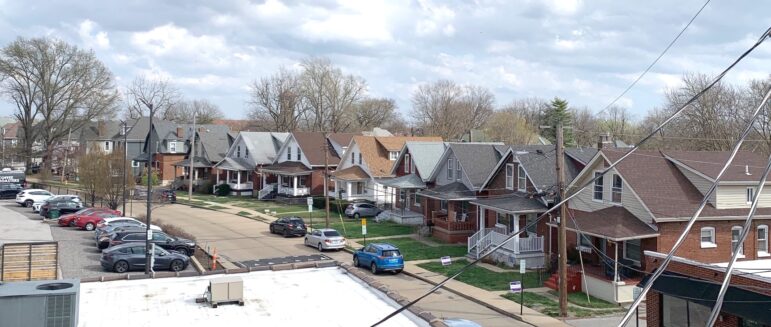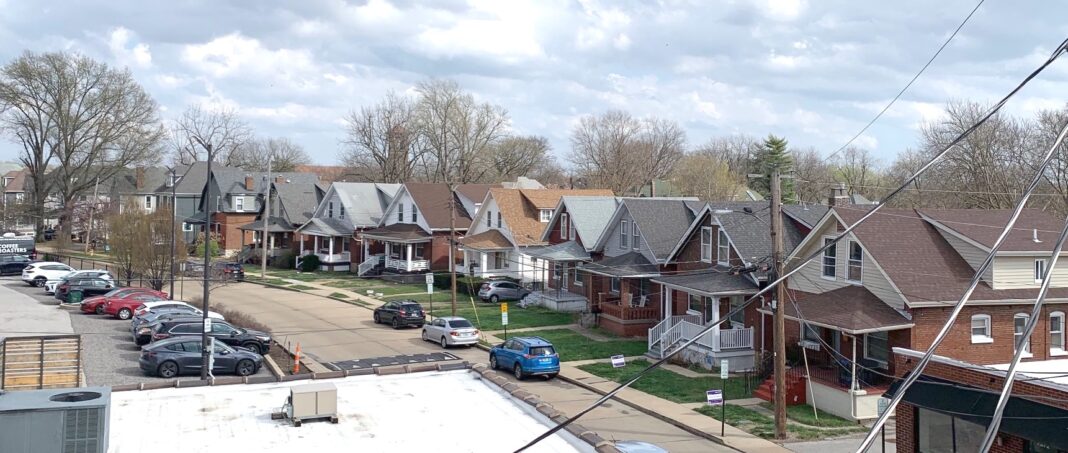The Maplewood City Council on Tuesday passed the first votes on an ordinance intended to increase opportunities for smaller, affordable housing and bring lot size standards into alignment with existing lots. Council members and the mayor said it was a big deal.
“It will really help people that are already in their homes stay in their homes, and it will push back on property taxes,” Mayor Nikylan Knapper said. She thanked council member Matt Coriell for spearheading it. She said he came to her with the idea, but that it would have to wait. She said she told him she and the city couldn’t wait.
The new law will cap home and lot size. “The intent of capping the height and square footage of new homes or alterations of single-family homes is to preserve local neighborhood characteristics by limiting the impact of oversized structures. Keeping a cap on oversized structures will also preserve housing affordability within the City of Maplewood,” according to city notes.
“This is extremely, extremely important,” Coriell said. “My special thanks to all of the previous council members, especially Sandi Phillips (former city council member), Anthony Traxler (director of public works). Our planning and zoning commission has been working extremely hard…on this. They ultimately brought my vision to life with their expertise, their education.”
Phillips said after the meeting that work on the law began in March 2021 when she and other former council members Jenny Schmidt and Sarah Crosley started updating what she called archaic city ordinances, such as a law that defined a man as the head of a family.
She said the law will prevent in Maplewood what has happened in places like Kirkwood and Webster Groves where “enormous” houses have replaced smaller original homes, towering over their neighbors.



This seems like a terribly short-sighted way to go about what it is trying to achieve. If you want to prevent the type of construction prominent in Kirkwood and elsewhere, where the homes take up most of the lot, the way to do that is with setback and height requirements, or even prohibit construction on more than a set percentage of a lot. Basing it on an average of homes within 300 feet is incredibly arbitrary. One small home would ensure that no one near them can add on to their homes at all, as it would drag down the average. Also, this seems like the goal is to artificially keep Maplewood homes from appreciating at a rate consistent with neighbors. Since most people’s homes are their most valuable asset, is that really a wise decision? One might also wonder at the constitutionality of such an ordinance. When you take someone’s right to use their property as they choose you are required to do so in the narrowest way possible to achieve that goal. This, on the other hand, seems entirely arbitrary.
I’m in favor of many parts of this bill but it looks to me like I’d never be allowed to fix up my wreck if a basement if this went through. The 3rd clause prevents any existing homeowner from expanding their square footage if it would be 10% above the average home square footage within 300 feet of my house. There are so many homes in maplewood that are far bigger than mine but the ones within 300 feet are smaller. This reads like it restricts existing homeowners who may have hopes of improving the interiors of their homes in future years. I love this town and have lived here for many years but dang….can someone please tell me I’m wrong? Can this be amended to focus more on future new homes or allowing people to fix up their basement in an existing home?
Brentwood too 🙁🙁
Does anyone know what caps will be imposed or where I can find the amendment that is being considered?
Jon, here’s the PDF of the meeting agenda. The details of this ordinance starts on page 16. http://surl.li/rpsgf
Thanks so much for sharing Doug. And thanks so much for all you do to support Maplewood. It’s a thankless job (especially these days) but know that some of us appreciate your efforts!
Building bigger is most certainly NOT greener. Then there’s the reality that as repair and energy costs rise, so will home taxation and its much larger hidden cost, “running” the house. (It’s like buying a car, only to find that gas and servicing cost much more over the life of the vehicle.) Insurance, utilities, and maintenance skyrocket.
It’s also worth realizing that many “new” homes are built as cheaply as possible, which means repair and replacement much sooner than really should be the case.
I’ve actually been wondering about this. There’s a lot of construction in ward 3 that has torn down smaller homes and replaced them with 750k McMansions
Perfect. Thank you for this. I’ve worried what has happened in other municipalities could happen here.
This is exactly what we need. Webster, Rock Hill have been ruined by the huge homes on tiny lots